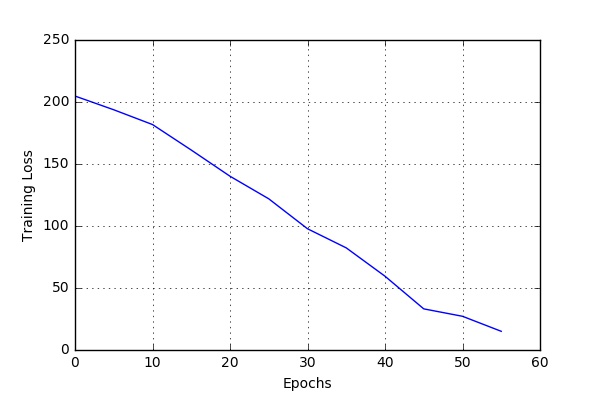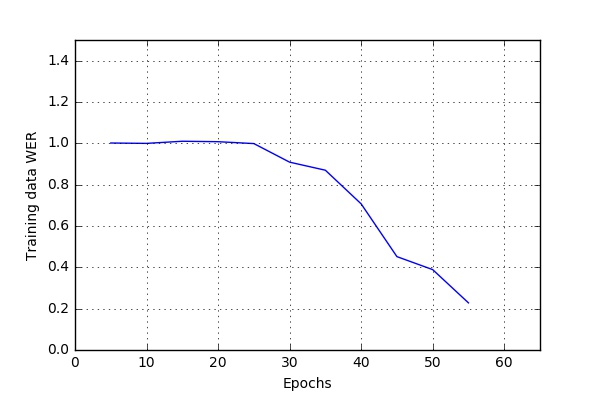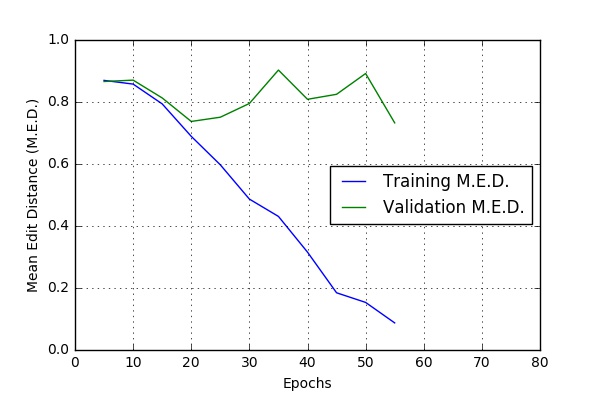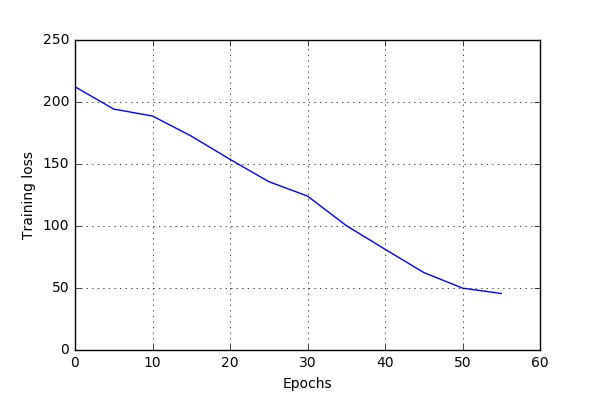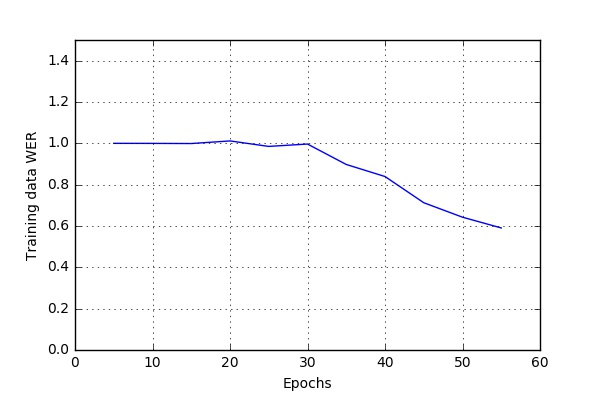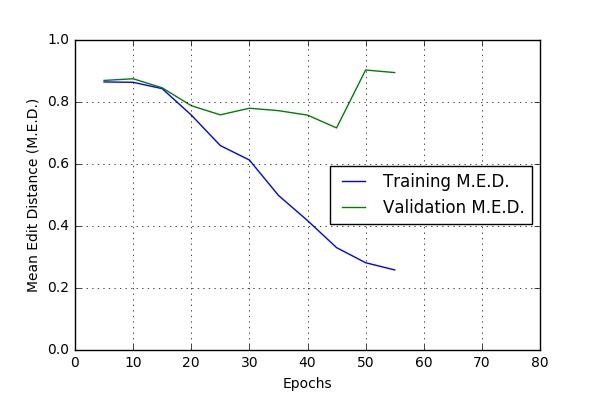pandeydivesh15 / Avsr Deep Speech
Programming Languages
Projects that are alternatives of or similar to Avsr Deep Speech
Audio and Visual Speech Recognition(AVSR) using Deep Learning
This is my Google Summer of Code 2017 Project with the Distributed Little Red Hen Lab.
The aim of this project is to develop a working Speech to Text module for the Red Hen Lab’s current Audio processing pipeline. The initial goal is to extend current Deep Speech model(audio only) to Red Hen lab's TV news videos datasets.
Now, it is common for news videos to incorporate both auditory and visual modalities. Developing a multi-modal Speech to Text model seems very tempting for these datasets. The next goal is to develop a multi-modal Speech to Text system (AVSR) by extracting visual modalities and concatenating them to the previous inputs.
This project is based on the approach discussed in paper Deep Speech. This paper discusses speech recognition using audio modality only, hence this project can be seen as an extension to Deep Speech model.
Contents
- Getting Started
- Data-Preprocessing for Training
- Training
- Checkpointing
- Some Training Results
- Exporting model and Testing
- Running code at Case HPC
- Acknowledgments
Getting Started
Prerequisites
-
For Audio-only Speech Recognition:
-
For Audio-Visual Speech Recognition:
In addition to above requirements, you will also require:
Installing
- Firstly, install Git Large File Storage(LFS) Support and FFmpeg.
- For video based speech recognition (lip reading), you will also require OpenCV 3.x and dlib for python.
- Open terminal and type following commands.
$ git clone https://github.com/pandeydivesh15/AVSR-Deep-Speech.git $ cd AVSR-Deep-Speech $ pip install -r requirements.txt
Data-Preprocessing for Training
Please note that these data-preprocessing steps are only required if your training audio/video files are quite long (> 1 min). If you have access to shorter wav files (length in secs) and their associated transcripts, you will not require any data-preprocessing (you must have CSV files too, see bin/import_ldc93s1.py for downloading one example dataset). In case you have longer audio/video files, it is suggested to use data-preprocessing.
These steps require videos/audios and their associated time-aligned transcripts. Time aligned time stamps for your audios/videos can be found using Gentle or Red Hen Lab's Audio Pipeline or any other alignment application.
Store time-aligned timescripts as json files. The json file should be of the format: Click here.
Note: By default, the project assumes that all .mp4(video) files are kept at data/RHL_mp4, json files at data/RHL_json and all wav files at data/RHL_wav. If you would like to change the defaults, change the associated variables at bin/preprocess_data_audio.py.
Audio-only Speech Recognition
bin/preprocess_data_audio.py expects 5 positional arguments.
| Argument | Description |
|---|---|
| output_dir_train | Output dir for storing training files (with trailing slash) |
| output_dir_dev | Output dir for storing files for validation (with trailing slash) |
| output_dir_test | Output dir for storing test files (with a trailing slash) |
| train_split | A float value for deciding percentage of data split for training the model |
| dev_split | A float value for deciding percentage of validation data |
| test_split | A float value for deciding percentage of test data |
Have a look at bin/preprocess_audio.sh, for a sample usage. This script runs bin/preprocess_data_audio.py with default storage locations and default data split percentages.
From the main project's directory, open terminal and type:
$ ./bin/preprocess_audio.sh
After this step, all prepared data files(train, dev, test) will be stored in data/clean_data folder.
Audio Visual Speech Recognition (AVSR)
Preparing data for training Autoencoder
bin/preprocess_auto_enc.py expects 2 necessary positional args and 2 optional args.
| Pos. Arguments | Description |
|---|---|
| video_dir | Output dir for storing training files (with trailing slash) |
| output_dir | Output dir for storing files for validation (with trailing slash) |
| Optional | Description |
|---|---|
| --max_videos n |
n = number of videos to be used for preprocessing. (Default = 1) |
| --screen_display | Determines whether to display the video being processed. |
Have a look at bin/preprocessing_AE.sh. This script runs bin/preprocessing_AE.sh with default values.
From the main project's directory, open terminal and type:
$ ./bin/preprocessing_AE.sh
Training RBMs and Autoencoder
The script bin/AE_training.py deals with training RBMs and autoencoder. It first trains RBMs and then using their weights, trains the main autoencoder.
The bash script bin/run_AE_training.sh runs the bin/AE_training.py using default settings.
$ ./bin/run_AE_training.sh
Preparing data for AVSR
Command line arguments for bin/preprocess_audio_video.py are same as in the case of audio-only speech recognition. Have a look at bin/preprocess_AVSR.sh for example usage. Open terminal and change directory to main project's directory. Type:
$ ./bin/preprocess_AVSR.sh
After this step, there will be three kinds of file formats for each file name. For e.g. if file's name is 'xyz', there will be 'xyz.wav'(containing actual audio), 'xyz.json'(containing visual features), and 'xyz.txt'(transcript).
Training
Original DeepSpeech
The original Deep Speech model, provided many command line options. To view those options, directly open the main script or you can also type:
$ ./DeepSpeech.py --help
To run the original Deep Speech code, with a sample dataset (called LDC93S1) and default settings, run:
$ ./bin/run-ldc93s1.sh
This script first installs the LDC93S1 dataset at data/ldc93s1/. Afterward, it runs DeepSpeech.py. It trains on LDC93S1 dataset, outputs stats for each epoch, and finally outputs WER report for any dev or test data.
DeepSpeech_RHL.py
Any code modifications for Red Hen Lab will be reflected in DeepSpeech_RHL.py. One such modification is that DeepSpeech_RHL.py allows transcripts to have digits[0-9] too, unlike original DeepSpeech.py.
To run modified DeepSpeech on your system (with default settings), open terminal and run:
$ ./bin/run_case_HPC.sh
# This script trains on your data (placed at data/clean_data/),
# and finally exports model at data/export/.
$ ./bin/run-ldc93s1_RHL.sh
# This script runs on LDC93S1 dataset. It doesn't exports any model.
DeepSpeech_RHL_AVSR.py
This script deals with audio-visual speech recognition. Before running this script, make sure that you have all prepared data at data/clean_data/ dir. See this for more details.
To train AVSR model (using data placed at data/clean_data/), open terminal and run:
$ ./bin/run_case_HPC_AVSR.sh
Note: Feel free to modify any of the above scripts for your use.
Checkpointing
During training of a model so called checkpoints will get stored on disk. This takes place at a configurable time interval. The purpose of checkpoints is to allow interruption (also in case of some unexpected failure) and later continuation of training without loosing hours of training time. Resuming from checkpoints happens automatically by just (re)starting training with the same --checkpoint_dir of the former run.
Be aware however that checkpoints are only valid for the same model geometry they had been generated from. In other words: If there are error messages of certain Tensors having incompatible dimensions, this is most likely due to an incompatible model change. One usual way out would be to wipe all checkpoint files in the checkpoint directory or changing it before starting the training.
Some Training Results
Audio-only Speech Recognition
Here are some of the results I obtained while running the code at CWRU HPC. The script bin/run_case_HPC.sh was used to get these results.
These results are based on a one hour long audio file. The file was split into 634 .wav files (See Data-Preprocessing). 90% files were used for training and 5% each for validation and testing.
Exporting model and Testing
If the --export_dir parameter is provided to DeepSpeech_RHL.py, a model will have been exported to this directory during training. This trained exported model can then be used for predicting transcripts for new audio/video files.
There are two scripts:
- For audio-only model: run_exported_model_audio.py
- For AVSR, run_exported_model_AVSR.py
Both of them expect following args:
| Argument | Description |
|---|---|
| -d, --export_dir | Dir where the trained model's meta graph and data were exported |
| -n, --model_name | Name of the model exported |
| -af, --wav_file | (Only for audio-only model) Wav file's location. |
| -vf, --video_file | Video file's location. For audio only model, if --wav_file given, this option will have no effect. |
| Options | Description |
|---|---|
| --use_spell_check | Decide whether to use spell check system for decoded transcripts from RNN. If option is given, spell correction system (KenLM) will be used. |
Usage examples:
Audio only Speech Model
-
For running an exported model with default settings, run:
$ python ./bin/run_exported_model_audio.pyNote: This script, by default, runs on data/ldc93s1/LDC93S1.wav file. In case you dont have LDC93S1 dataset downloaded, run:
$ python -u bin/import_ldc93s1.py ./data/ldc93s1 -
Using command line options for running exported model:
Finding transcript for audio/video file using audio-only model:
$ python ./bin/run_exported_model_audio.py -d path_to_exported_model/ -n model_name -af /path_to_wav_file/file.wav
$ python ./bin/run_exported_model_audio.py -d path_to_exported_model/ -n model_name -vf /path_to_video_file/file.mp4
Audio-Video Speech Model (AVSR)
Finding transcript of a video file using AVSR:
$ python ./bin/run_exported_model_AVSR.py -d path_to_exported_model/ -n model_name -vf /path_to_video_file/file.mp4
Running code at Case HPC
Please read run_at_HPC.md for running this project at Case HPC.

